Zhangye: A Multicolored Tapestry of the Silk Road
Zhangye: A Multicolored Tapestry of the Silk Road
Zhangye, historically known as "Ganzhou", is nestled in northwest Gansu Province along the central Hexi Corridor. This 2,000-year-old city, once a vital Silk Road hub, was poetically described: "Who forgets the snow on Qilian’s peaks / Might mistake Ganzhou for the Jiangnan waterways." As a National Historic and Cultural City, Zhangye dazzles with its otherworldly Danxia landforms, snow-capped mountains, desert wetlands, and ancient ruins—making it a golden stop along the Silk Road.
Zhangye : Where Frontier Splendor Meets Timeless Charm
The city’s name, meaning "To Extend the Nation’s Reach to the Western Regions", reflects its Han Dynasty role as a commercial gateway. Here, wetlands shimmer with "half a city of reeds", while hills blaze with "cinnabar-red hues"—all amidst remarkably preserved cultural heritage. With cool summers (perfect for retreats) and autumns painted in fiery foliage (a photographer’s dream), Zhangye is a study in contrasts.
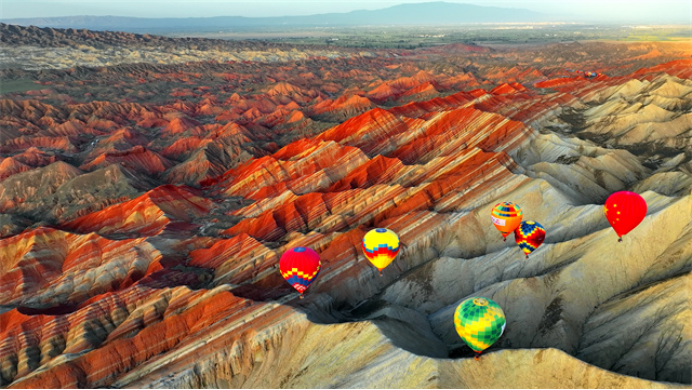
"Colorful Danxia Adds Splendor" Song Qibiao
1. Zhangye Danxia National Geological Park
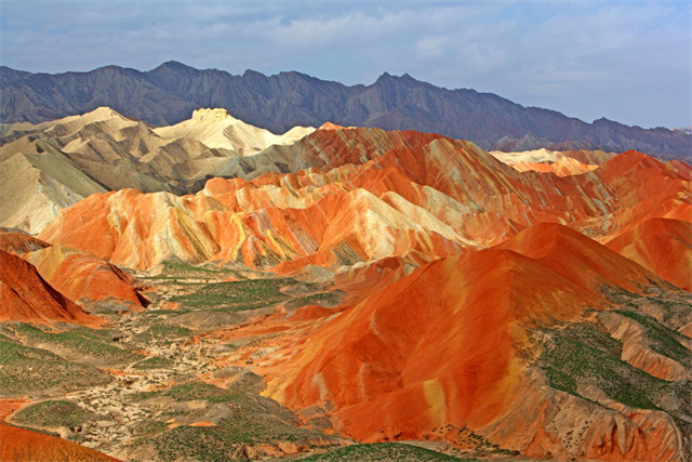
This fantastic landscape, made of red gravel rock hundreds of millions of years ago, is known as ‘God's colour palette’ by the National Geographic of China. The seven-coloured hills are like a giant dragon winding, ochre, gold, grey and white and other colour bands overlapping and intertwined, in the morning and evening light and shadow changes out of the flowing flame. Wind erosion on the ridge carved ‘seven-coloured screen’ like Dunhuang Flying Sky left behind the neon dress, ‘Turtle asked the sky’ and other hieroglyphic stone tells the magic of natural creation. The ancient Silk Road from this gorgeous mountains through, although the sound of camel bells have gone, but the nomads left the petroglyphs and legends, still in this ‘Flaming Mountain’ in the endless. Whenever the sun sinks, the whole Danxia is like a charcoal fire, reproducing the ancient poem of ‘Colour as Wodan, brilliant as Mingxia’.
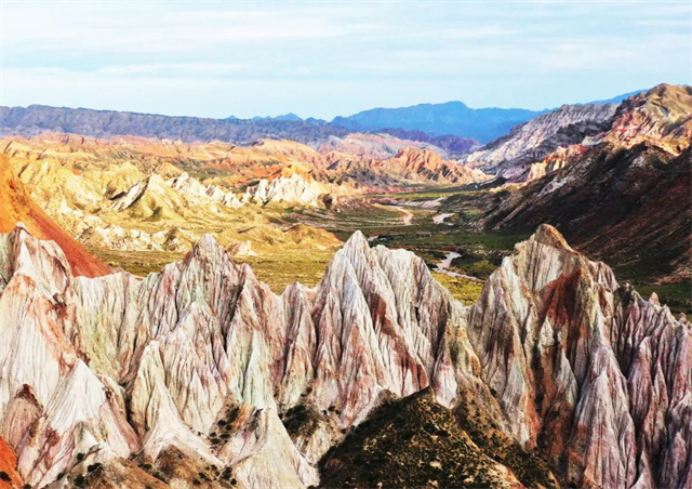
2. Horseshoe Temple Grottoes: A Thousand Years of Zen in the Land of Hanging Buddhas
Carved in the Northern Liang period, the grottoes are a perfect blend of Buddhist art and Qilian mountain cliffs. The Thirty-three Heavenly Grottoes climb vertically up seven levels like a ladder, with narrow canals and niches outlining a three-dimensional mandala on the 100-metre wall. The mysterious hoofprints in the Hall of Horseshoes are said to have been left by celestial horses, and the 15-meter-high Standing Buddha in the Hall of Hidden Buddhas forms a wonderful dialogue of ‘human and heavenly senses’. The Northern Wei mural painting of the flying sky when the wind, the Western Xia coloured sculpture of the bodhisattva with a lowered eyebrow and a smile, the Tibetan Buddhist scripture streamers and the Han Chinese eaves coexist harmoniously in this place. The chanting of Buddhist chants and the sound of the wind echoing in the mountains tell the legend of the fusion of multiple faiths on the Silk Road.
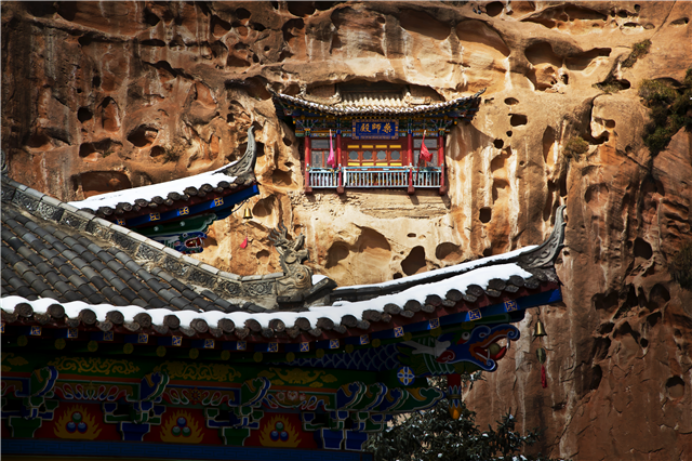
3. The Great Buddha Temple: Nirvana in Western Xia's Buddhist Kingdom
This Western Xia royal temple is home to Asia's largest indoor wooden clay sculpture of a reclining Buddha, the 34.5-metre statue of Siddhartha Gautama's Nirvana. Buddha lying on his right side, his face is peaceful, between his fingers flows the ‘eight phases of Nirvana’ Buddhist narrative, behind the ten disciples to raise the mourning statue solidified a thousand years of compassion. Cangjing Pavilion more than six thousand volumes of Ming version of the Buddhist scriptures flooded with the light of time, in which the ‘Daming Sanzang Sacred Teaching North Tibetan’ is known as the treasure of the temple. On the brick carving ‘Journey to the West’ story wall of the Shanxi Guild Hall, the Monkey King's golden rod and the scops owl on the temple's flying eaves reflect each other, and Sanskrit and Chinese cultures complete a poetic dialogue here. Whenever the morning bells and drums ring, the Buddhist legacy of the Xixia Dynasty still reverberates in this ‘Buddhist City on the Seas’.
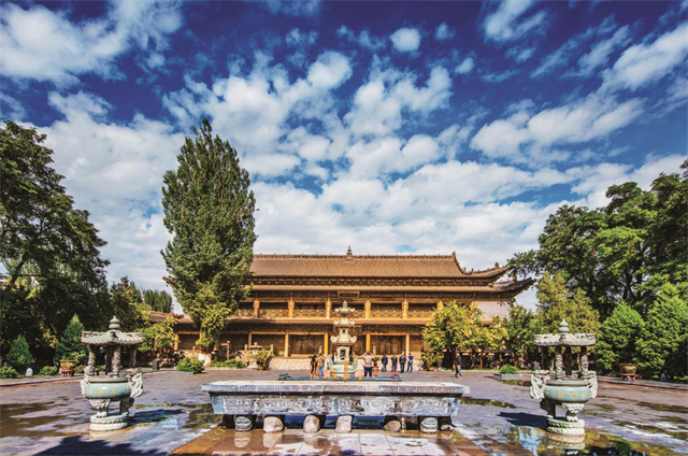
4. Pingshan Lake Grand Canyon Human Landscape: Red Epic Sculpted by Time
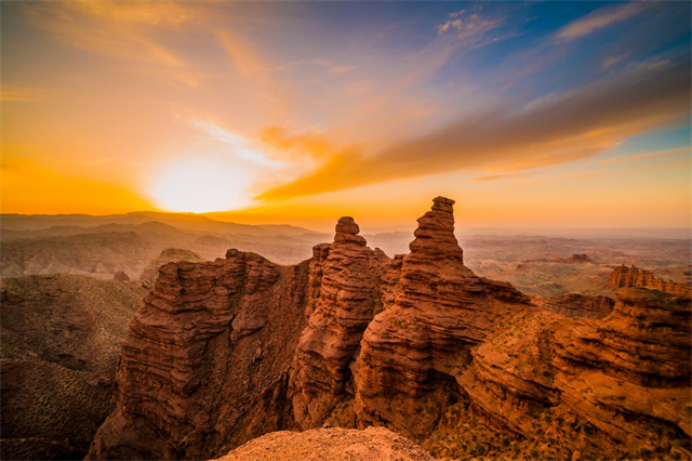
Hundreds of millions of years of wind, rain and snow have sculpted this red landscape into a breathtaking natural gallery. Deep in the canyon, the ochre-red rock walls are like frozen waves, and the jagged ‘Nine Dragons Meeting the Sea’ stone columns are like dragons breaking through the waves. General Stone’ stands tall, as if the garrison generals under the command of Huo Zaiwei incarnated as a rock; “a line of heaven” fissure through the light of day, for the deep canyon with a mysterious veil. The mysterious symbols left by the ancient nomads on the rock wall, and the vaguely discernible camel marks on the Silk Road, together weaving the legend of the border intertwined with time and space. When the setting sun dyes the canyon golden red, the whole world is like a lit beacon, recreating the most magnificent geological epic of the Hexi Corridor.
5. Shandan Military Horse Ranch: A Thousand-Year Pastoral of Iron Horsemanship
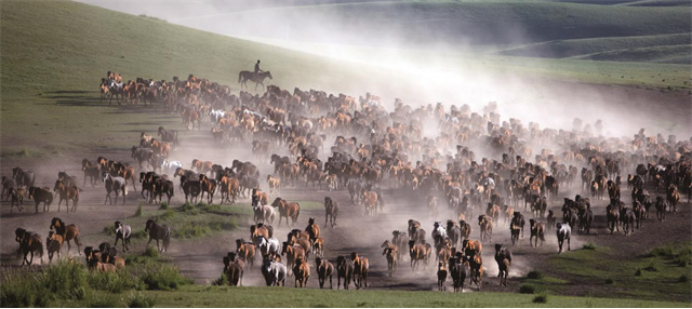
This Royal Horse Ranch, created by Huo Qubing, is a living epic engraved in the Qilian Mountains. Over the past two thousand years, the neighing of the blood-sweat horses and the hooves of the iron horsemen of the Han and Tang dynasties have been intertwined here, and the smoke and dust of the caravans and military brigades on the Silk Road postal routes have been transformed into winds in the meadows. In summer, ten thousand horses gallop, like the flowing Dunhuang frescoes reappear; in autumn, the long and melodious tune of the horse herders converses with the riding and shooting scenes in the Xiongnu petroglyphs in the space. Beacon flints scattered deep in the grassland were once the beacon towers of the Great Wall defence line; the Qilian snowy peaks reflecting the drinking pool, reflecting the back of the Yuezhi, Usun, Mongolia and other nomadic people. This is the largest horse farm in Asia, will be the cold war era of iron and steel, condensed into a never-fading long poem of the border.
